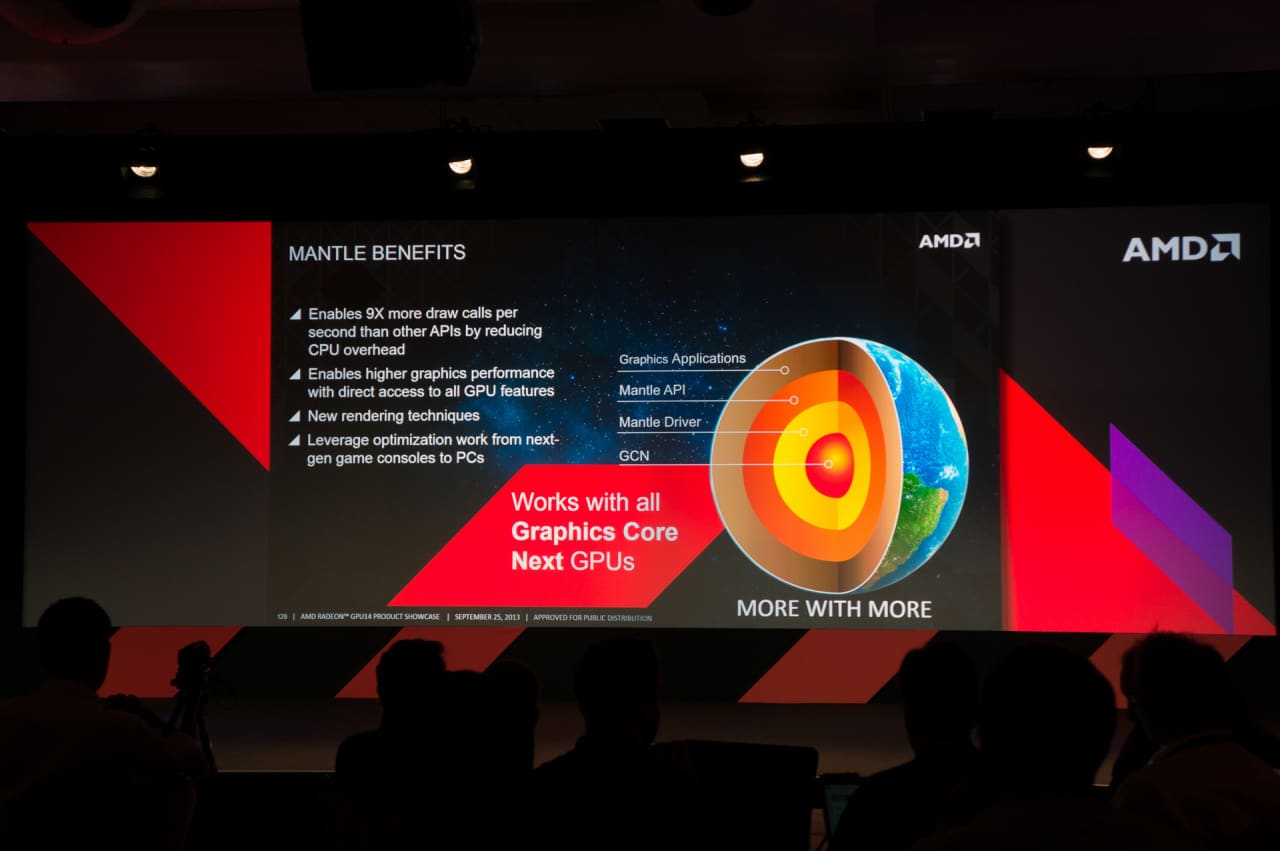One of the most talked about topics of the winter in the hardware world was without a doubt AMD’s graphics investment Mantle for the architecture GCN. Behind the name hides a new programming interface (API), where the big goal is reduced overhead compared to well-used DirectX.
In short, Mantle follows the same thinking as when programming for consoles. If the software is adapted to the current hardware without unnecessary layers of abstraction, less computing power is wasted and the graphics circuit has to stretch its legs. The result is the possibility of a higher frame rate without the processor hitting the ceiling – at least theoretically.
Above all, a technology for weaker computer systems
The greatest benefits are expected for systems with relatively limited processor capacity where DirectX consumes computational cycles unnecessarily. According to AMD, this is an increase in performance of up to 45 percent for APU solutions in the Kaveri family when Battlefield 4 is on the menu, but also noticeable improvements for other configurations where the processor is responsible for the limitations.
For performance systems with a lavish processor, the differences are in many cases more modest. When the graphics card stands for the main limitation, it is currently about marginal improvements. A maximum of 15 percent higher frame rate in Battlefield 4 compared to DirectX is what matters, with only a few percent in the scenario with a relatively really powerful processor.
The hope is that further performance gains in future game titles will be better adapted to the new interface. One of these is Star Swarm from Oxide Games, in which hundreds of percent improvements are reported in processor-based scenarios.
Limitations with the initial trial version
Mantle support for more expensive graphics cards is also limited at first. AMD delivers full performance with hardware built around the Hawaii, Bonaire and the integrated graphics part of Kaveri, ie Radeon R9 290, R9 290X, R7 260X, HD 7790 and the latest generation APU.
For other GCN-based graphics cards, Mantle does work, but with what AMD currently describes as “performance problems”. It includes several popular models, not least the previous flagship Radeon HD 7970 and the bestseller Radeon HD 7870. According to AMD, the problems will be fixed in a future driver, so far without any concrete schedule.
For users with multiple graphics cards, Mantle means big changes. The interface formally lacks Crossfire, but leaves it to each game developer to implement their own support for the Alternate Frame Rendering (AFR) technology. To begin with, this is an experimental variant in Battlefield 4, where official support is expected in the coming weeks.
Remote Intel and Nvidia support
One of the biggest points with Mantle is that the interface will be open, where AMD has even talked about handing over control to the OpenGL-responsible Khronos Group. Plans on that front, however, are further in the future – for now, Mantle is completely exclusive to AMD’s hardware.
As long as the interface is under development, the company believes that discussion with the respective game developers will suffice, where other players simply have to wait. Any support for, for example, Nvidia’s or Intel’s hardware is only relevant in connection with the launch of a developer package (SDK), which is planned for later in the year.
What is on the wallpaper, however, is support for operating systems other than Windows. AMD announces that the company is strongly considering taking Mantle to Linux, but that no further information is available at present. However, concrete announcements about Linux support can be expected in the coming months.
Battlefield 4 and Star Swarm are first out with Mantle
First out with experimental support for Mantle are two different titles. Most talked about is without a doubt Battlefield 4 signed Swedish DICE, where technology manager Johan “repi” Andersson also has a leading role in the development of the interface. The update with support for Mantle rolls out during the day starting at 10:00.
The second title is Star Swarm from developer Oxide Games, where the company’s game engine Nitrous is a constant crown jewel in AMD’s demonstrations of Mantle. According to Oxide, the technology opens up to allow thousands of spaceships to appear on the screen at the same time even with weaker computer systems where DirectX quickly puts a stop to it. Star Swarm will be available through the game service Steam at 21:00.
In addition to technology-supported games, an updated driver is also required, Catalyst 14.1, which will be available for download from AMD’s website during the day. Note that the Mantle support is in a trial version, so those willing to experiment should expect a shaky journey.
Update 140130: AMD announces that Catalyst 14.1 driver is delayed. When the launch will take place is currently unclear, but the company promises to return with more information as soon as possible.
Update 140131: AMD announces that the driver is still not ready. The company hopes to have a version for the media on Friday afternoon EST, which means sometime tonight Swedish time. Whether this also reaches end users and in that case when is unclear.
AMD’s performance figures with Battlefield 4 and Star Swarm
Show more















